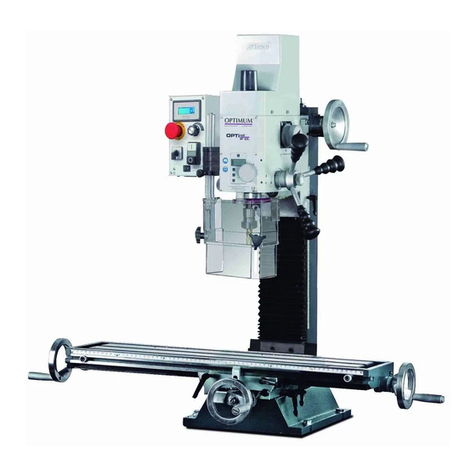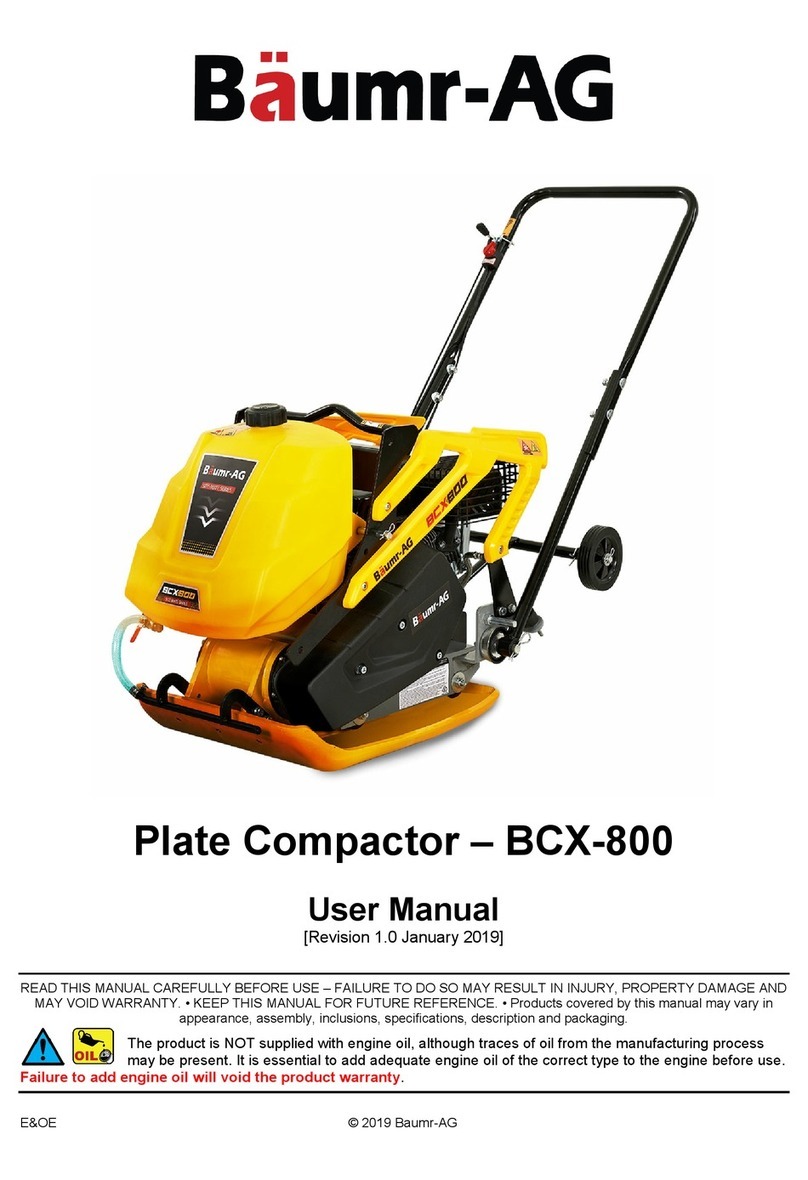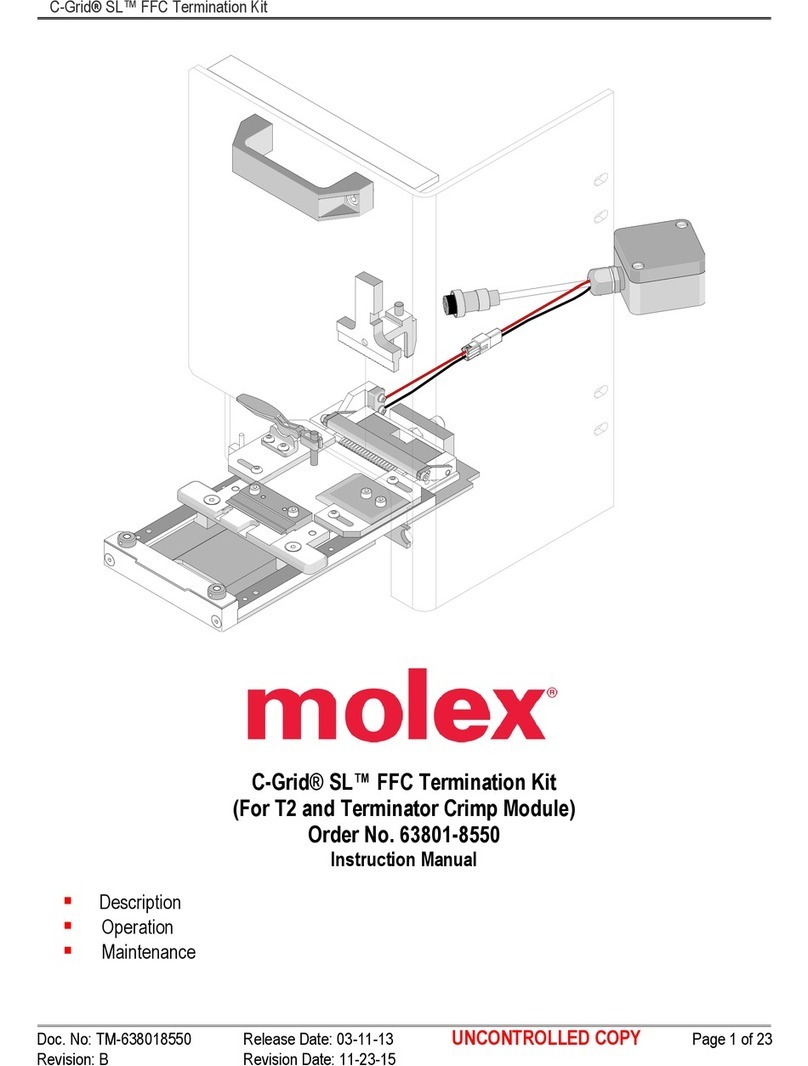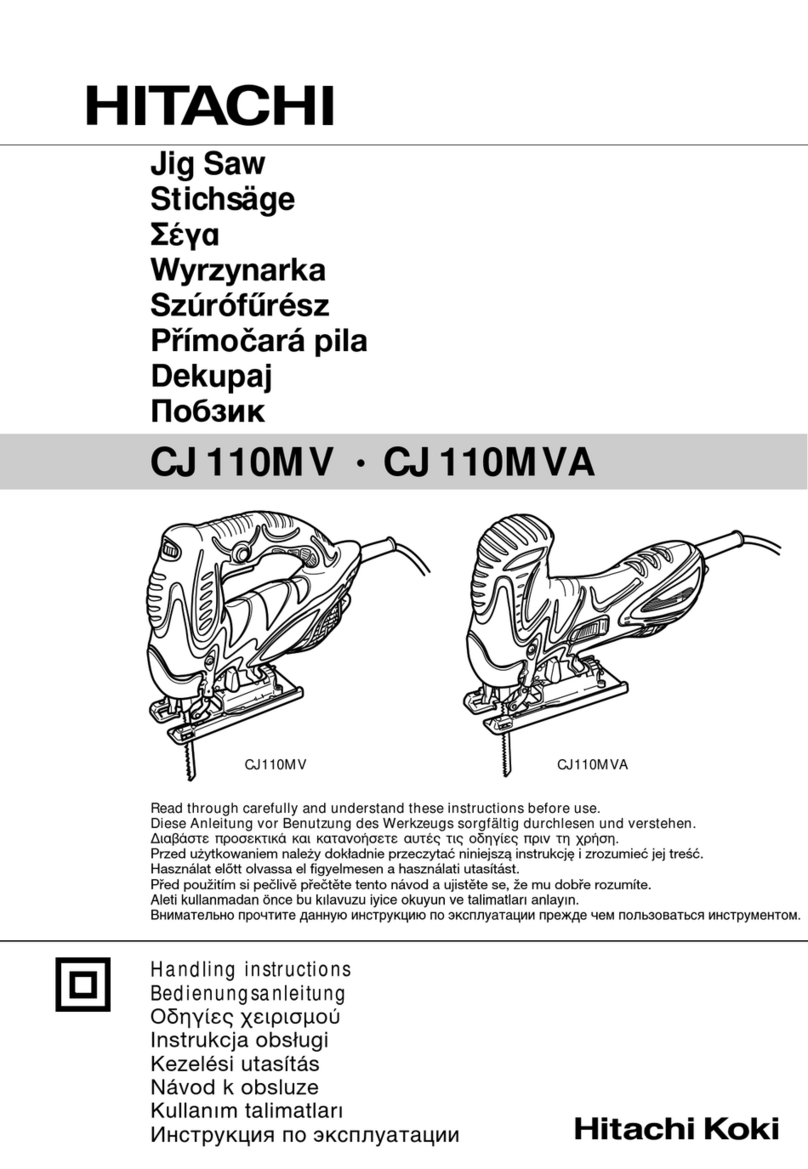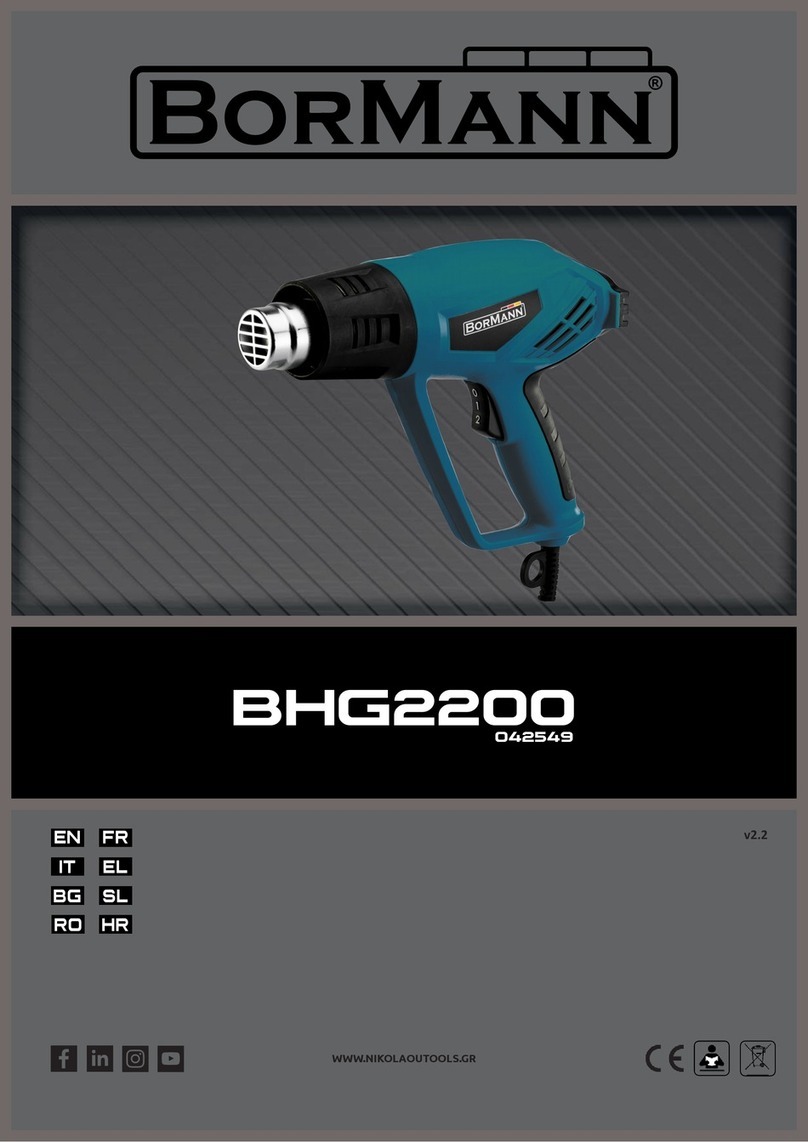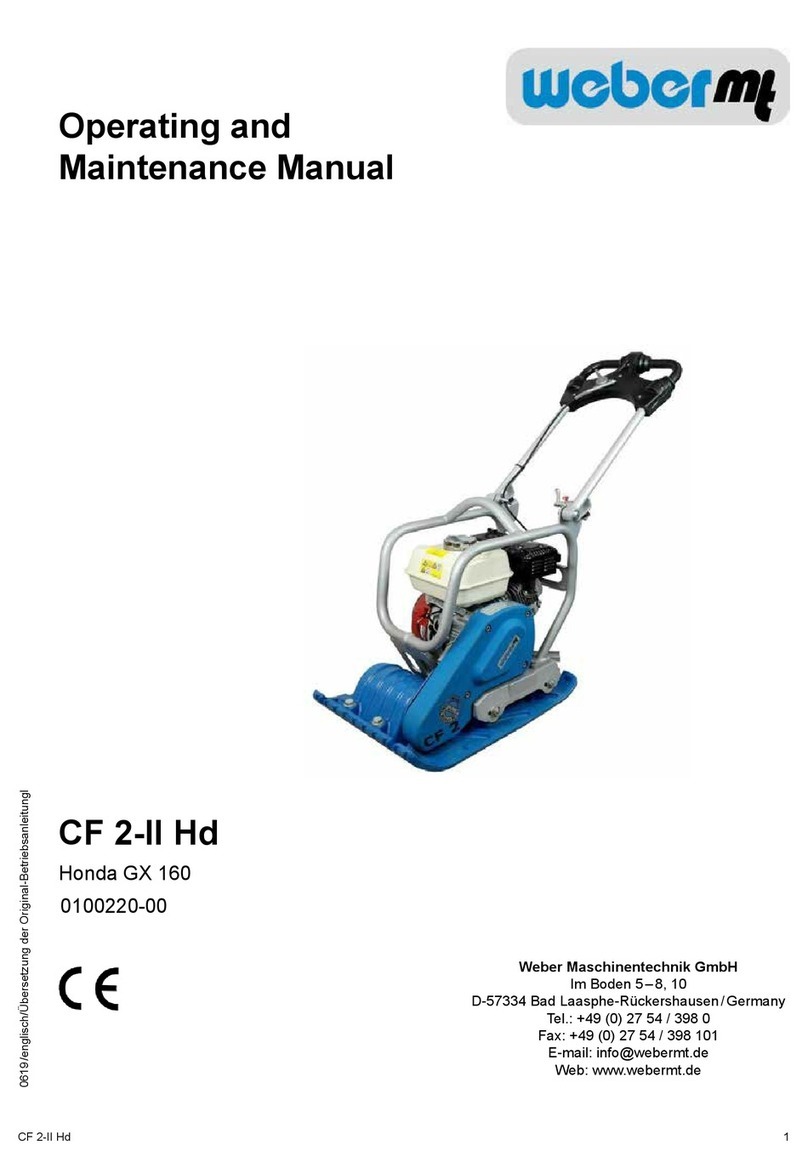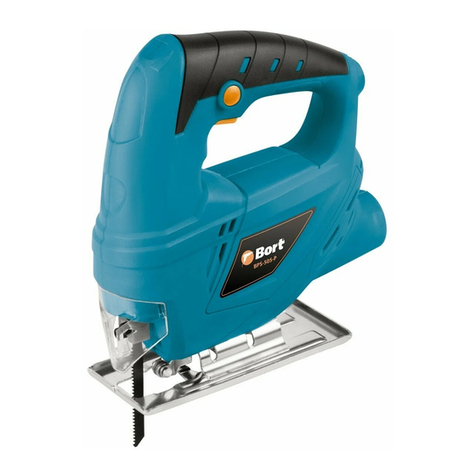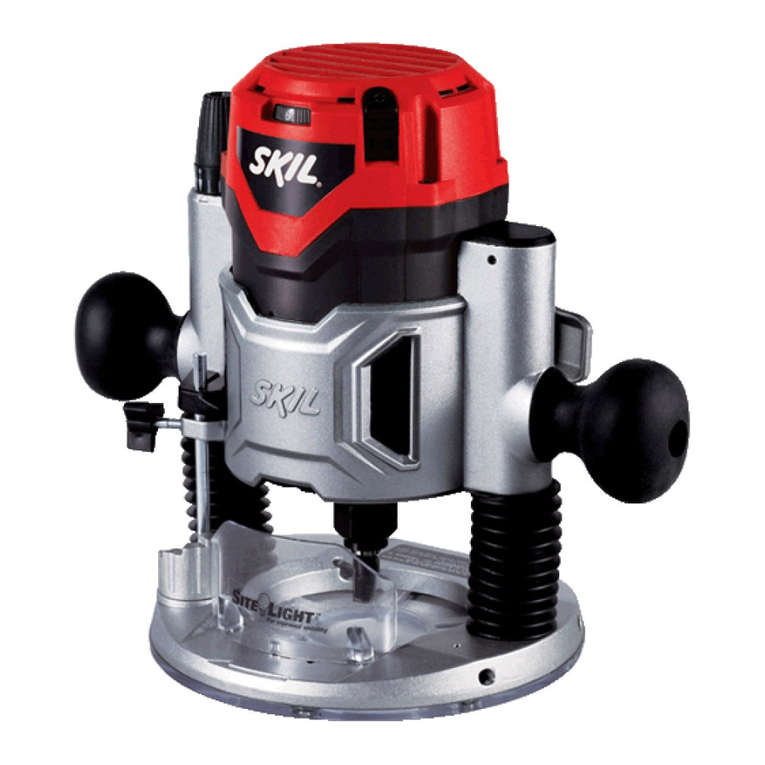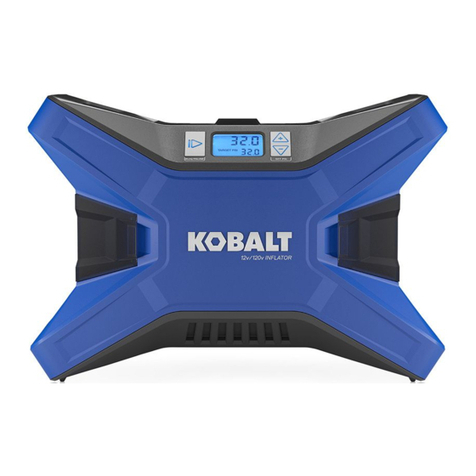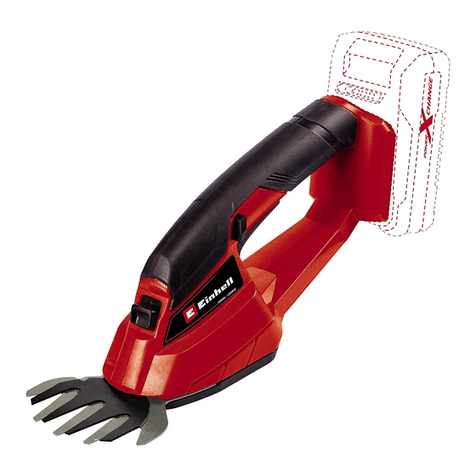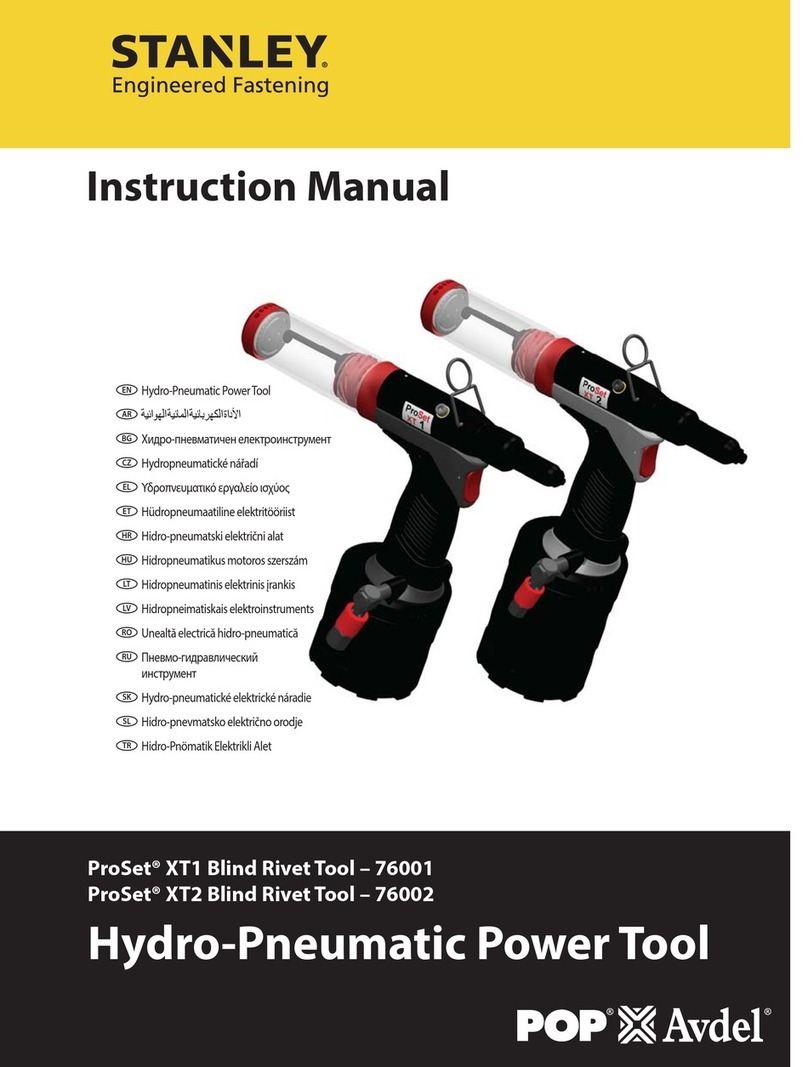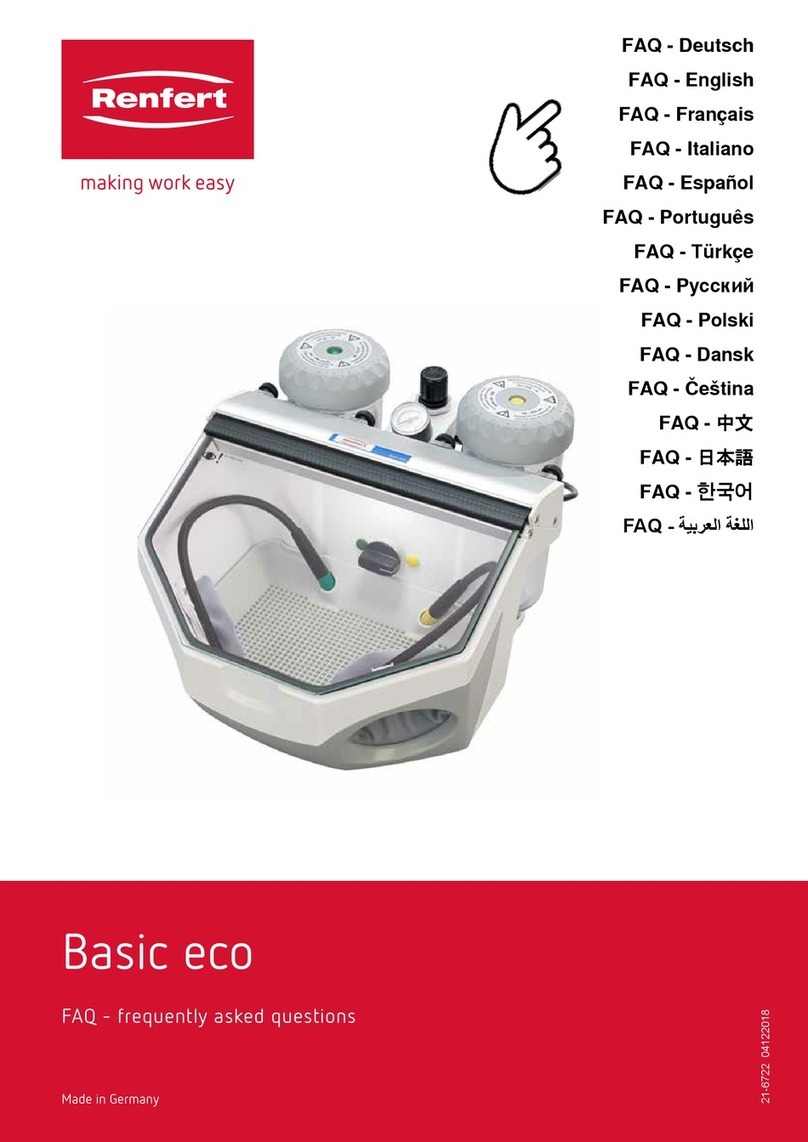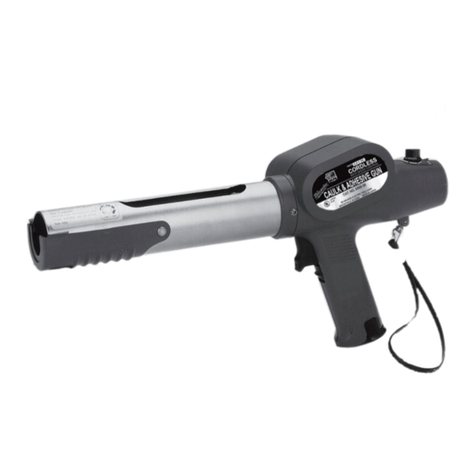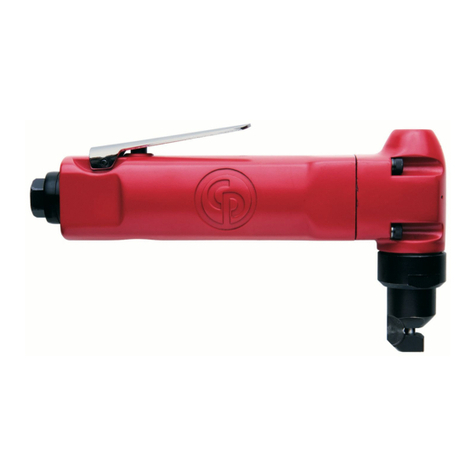Emhart POP PB2500 User manual

1
English
Battery tool
for blind rivets
PB2500
www.emhart.com

2
English
© 2013 Emhart Teknologies
All rights reserved.
The information provided may not be reproduced and/or made public in any way and through any means
(electronically or mechanically) without prior explicit and written permission from Emhart Teknologies . The
information provided is based on the data known at the moment of the introduction of this product. Emhart
Teknologies pursues a policy of continuous product improvement and therefore the products may be subject
to change. The information provided is applicable to the product as delivered by Emhart Teknologies. There
fore, Emhart Teknologies cannot be held liable for any damage resulting from deviations from the original
specications of the product.
The information available has been composed with the utmost care. However, Emhart Teknologies will not
accept any liability with respect to any faults in the information nor for the consequences thereof. Emhart
Teknologies will not accept any liability for damage resulting from activities carried out by third parties. The
working names, trade names, registered trade marks, etc. used by Emhart Teknologies should not be
considered as being free, pursuant to the legislation with respect to the protection of trade marks.
Model PB2500 (ECB181 battery) PB2500 (ECB180 battery)
Weight kg [lbs] 1.7 2.0
Length mm [in] 320 [12.6] 320 [12.6]
Height mm [in] 240 [9,4] 240 [9,4]
Stroke mm [in] 25 [0.984] 25 [0.984]
Pulling Force N [lbf] 8,500 [1911] 8,500 [1911]
Rivet Range nom. dia. size 3 ( ø 2,4 [3/32”]) thru size 6 (ø 4,8 [3/16”])
Nom. Rivet Dia. EBC181 battery
(18v, 1.5Ah)
EBC180 battery
(18v, 3.0Ah)
size 3 ø 2,4 [3/32] 1,300 2,600
size 4 ø 3,2 [1/8] 1,200 2,400
size 5 ø 4,0 [5/32] 1,100 2,200
size 6 ø 4,8 [3/16] 900 1,800
* The values are listed as a guide only and are estimates based on a fully charged battery. Results may vary depending on
rivet material, tool/battery condition and work environment.
Estimated Rivets per Charge*

3
English
Fig. 1
Fig. 2
Fig. 3
2,4 3,2
[3/32] [1/8]
4,0 4,8
[5/32] [3/16]
P
3.2 [1/8]
4,8 [3/16]
4.0 [5/32]
I
K2
L
O
N
M
H
A
F GD
C
E
B
J
K
K
Q
K
xxx
yyy

4
English
R
S
T2
U
V
W
Fig. 4
Fig. 5
Fig. 6
Fig. 10
Fig. 9
Fig.8
Fig. 7
B
C
D
A
J
Y
A B
E
X
A
Y

5
English
1. Technical Data............................................................................................................................................................ 6
2. EC-Declatation of Conformity............................................................................................................................... 7
3. Defenitions: Safety Guidelines.............................................................................................................................. 8
4. General PowerTool Safety Warnings................................................................................................................... 8
5. Additional Specic Safety Rules for Blind rivet tools.................................................................................... 10
6. Residual Risks.............................................................................................................................................................. 10
7. Markings on Tool....................................................................................................................................................... 10
8. Important Safety Instructions for All Battery Chargers................................................................................ 10
9. Chargers........................................................................................................................................................................ 11
10. Chargers Procedures................................................................................................................................................ 11
11. Charging Process....................................................................................................................................................... 11
12. Hot/Cold Pack Delay................................................................................................................................................. 11
13. Important Safety Instructions for All Battery Packs....................................................................................... 11
14. Battery Packs............................................................................................................................................................... 12
15. Storage Recommendations................................................................................................................................... 12
16. Labels on Charger and Battery Pack................................................................................................................... 12
17. Package contents...................................................................................................................................................... 13
18. Description.................................................................................................................................................................. 13
19. Identication of the tool......................................................................................................................................... 13
20. Electrical Safety.......................................................................................................................................................... 14
21. Using an Extension Cable....................................................................................................................................... 14
22. Assembly & Adjustments........................................................................................................................................ 14
23. Inserting and Removing the Battery Pack from the Tool............................................................................ 14
24. Operration - Instructions for Use........................................................................................................................ 14
25. Proper Hand Position............................................................................................................................................... 14
26. Tool Setup & Mandrel Collection.......................................................................................................................... 15
27. Use.................................................................................................................................................................................. 15
28. Cleaning and Maintenance.................................................................................................................................... 15
29. Cleaning........................................................................................................................................................................ 16
30. Optional Accessories................................................................................................................................................ 16
31. Protecting the Environment.................................................................................................................................. 17
32. Rechargealbe Battery Pack.................................................................................................................................... 17
33. Protect your Investment ........................................................................................................................................ 17
34. Spare parts - Optional Equipment....................................................................................................................... 18
35. Hints for Quick use.................................................................................................................................................... 21
36. Trouble Shooting....................................................................................................................................................... 21
CONTENT

6
English
BATTERY TOOL for BLIND
RIVETS
Congratulations!
You have chosen a POP®tool. Years of
experience, thorough product development and
innovation make POP®one of the most reliable
partners for professional blind rivet tool users.
1. TECHNICAL DATA
The vibration emission level given in this information
sheet has been measured in accordance with a
standardised test given in EN 60745 and may be
used to compare one tool with another. It may be
used for a preliminary assessment of exposure.
PB2500
Voltage V 18
Type 1
Battery Type Li-Ion
Weight (without battery pack) kg 1.35
Lpa (sound presure) dB(A) 74
Kpa (sound pressure uncertainty) dB(A) 3
Lwa (sound power) dB(A) 85
Kwa (sound power uncertainty) dB(A) 3
Vibration total values (triax vector sum) determined according
to EN 60745:
Vibration emission value ah
ah=
Uncertainty K =
m/s <2.5
m/s 1.5
Battery pack EBC181-NA/EBC180-NA ECB181-QW/EBC180-QW
Battery type Li-Ion Li-Ion
Voltage VDC 18 18
Capacity Ah1.5/3.0 1.5/3.0
Weight kg 0.35/0.64 0.35/0.64
Charging duration min 30/60 30/60
Charger EBC101-NA ECB105-QW
Battery Type Li-Ion Li-Ion
Battery type Mains voltage VAC 120 230
Input Frequency Hz 60 50
Weight kg 0.55 0.55
WARNING: The declared vibration
emission level represents the main
applications of the tool. However if the
tool is used for dierent applications,
with dierent accessories or poorly
maintained, the vibration emission may
dier. This may signicantly increase the
exposure level over the total working
period.
An estimation of the level of exposure to
vibration should also take into account
the times when the tool is not used
or when it is running but not actually
setting a rivet. This may signicantly
reduce the exposure level over the total
working period.
Identify additional safety measures to
protect the operator from the eects of
vibration such as: maintain the tool and
the accessories, keep the hands warm,
organisation of work patterns.

7
English

8
English
c)
4.2) ELECTRICAL SAFETY
a)
b)
c)
d)
e)
f)
Fuses
Europe 230V tools 10 Amperes, mains
CAUTION: Indicates a potentially
hazardous situation which, if not
avoided, may result in minor or
moderate injury.
DANGER: Indicates an imminently
hazardous situation which, if not avoided,
will result in death or serious injury.
WARNING: Indicates a potentially
hazardous situation which, if not avoided,
could result in death or serious injury.
NOTICE: Indicates a practice not
related to personal injury which, if
not avoided, may result in property
damage.
Denotes risk of electric shock
Denotes risk of re
Keep work area clean and well lit.
Cluttered or dark areas invite accidents.
Do not operate power tools in explosive
atmospheres, such as in the presence of
ammable liquids, gases or dust.
Power tools create sparks which may ignite
the dust or fumes.
Power tool plugs must match the outlet. Never
modify the plug in any way. Do not use any
adapter plugs with earthed (grounded) power
tools. Unmodied plugs and matching outlets will
reduce risk of electric shock.
Avoid body contact with earthed or grounded
surfaces such as pipes, radiators, ranges and
refrigerators. There is an increased risk of electric
shock if your body is earthed or grounded.
Do not expose power tools to rain or wet
conditions. Water entering a power tool will
increase the risk of electric shock.
Do not abuse the cord. Never use the cord for
carrying, pulling or unplugging the power tool.
Keep cord away from heat, oil, sharp edges
or moving parts. Damaged or entangled cords
increase the risk of electric shock.
When operating a power tool outdoors, use an
extension cord suitable for outdoor use. Use of
a cord suitable for outdoor use reduces the risk of
electric shock.
If operating a power tool in a damp location
is unavoidable, use a residual current device
(RCD) protected supply. Use of an RCD reduces the
risk of electric shock
3. Denitions: Safety Guidelines
The denitions below describe the level of severity
for each signal word. Please read the manual and
pay attention to these symbols.
4. General Power Tool Safety Warnings
SAVE ALL WARNINGS AND INSTRUCTIONS
FOR FUTURE REFERENCE
The term “power tool” in the warnings refers
to your mains-operated (corded) power tool or
battery-operated (cordless) power tool.
4.1) WORK AREA SAFETY
a)
b)
WARNING: To reduce the risk of injury,
read the instruction manual.
WARNING! Read all safety warnings
and all instructions. Failure to follow the
warnings and instructions may result in
electric shock, re and/or serious injury.
Keep children and bystanders away while
operating a power tool. Distractions can
cause you to lose control.

9
English
4.3) PERSONAL SAFETY
a)
b)
c)
d)
e)
f)
4.4 POWER TOOL USE AND CARE
a)
b)
c)
d)
e)
f)
g)
4.5) BATTERY TOOL USE AND CARE
a)
b)
c)
d)
Stay alert, watch what you are doing and use
common sense when operating a power tool.
Do not use a power tool while you are tired or
under the inuence of drugs, alcohol or medica-
tion. A moment of inattention while operating
power tools may result in serious personal injury.
Use personal protective equipment. Always
wear eye protection. Protective equipment such
as dust mask, non-skid safety shoes, hard hat, or
hearing protection used for appropriate conditions
will reduce personal injuries.
Prevent unintentional starting. Ensure the
switch is in the o-position before connect-
ing to the power source and/or battery pack,
picking up or carrying the tool. Carrying power
tools with your nger on the switch or energis-
ing power tools that have the switch on invites
accidents.
Remove any adjusting key or wrench before
turning the power tool on. A wrench or a key left
attached to a rotating part of the power tool may
result in personal injury.
Do not overreach. Keep proper footing and bal-
ance at all times. This enables better control of the
power tool in unexpected situations.
Dress properly. Do not wear loose clothing or
jewellery. Keep your hair, clothing and gloves
away from moving parts. Loose clothes, jewellery
or long hair can be caught in moving parts.
Do not force the power tool. Use the correct
power tool for your application. The correct
power tool will do the job better and safer at the
rate for which it was designed.
Do not use the power tool if the switch does not
turn it on and o. Any power tool that cannot be
controlled with the switch is dangerous and must
be repaired.
Disconnect the plug from the power source
and/or the battery pack from the power tool
before making any adjustments, changing ac-
cessories, or storing power tools. Such preventive
safety measures reduce the risk of starting the power
tool accidentally.
Store idle power tools out of the reach of
children and do not allow persons unfamiliar
with the power tool or these instructions to op-
erate the power tool. Power tools are dangerous in
the hands of untrained users.
Maintain power tools. Check for misalignment
or binding of moving parts, breakage of parts
and any other condition that may aect the
power tool’s operation. If damaged, have the
power tool repaired before use. Many accidents
are caused by poorly maintained power tools
Keep cutting tools sharp and clean. Properly
maintained cutting tools with sharp cutting edges
are less likely to bind and are easier to control.
Use the power tool, accessories and tool bits
etc., in accordance with these instructions
taking into account the working conditions and
the work to be performed. Use of the power tool
for operations dierent from those intended could
result in a hazardous situation.
Recharge only with the charger specied by the
manufacturer.A charger that is suitable for one
type of battery pack may create a risk of re when
used with another battery pack.
Use power tools only with specically desig-
nated battery packs. Use of any other battery
packs may create a risk of injury and re.
When battery pack is not in use, keep it away
from other metal objects like paper clips, coins,
keys, nails, screws or other small metal objects
that can make a connection from one terminal
to another. Shorting the battery terminals together
may cause burns or a re.
Under abusive conditions, liquid may be ejected
from the battery, avoid contact. If contact
accidentally occurs, ush with water. If liquid
contacts eyes, additionally seek medical help.
Liquid ejected from the battery may cause
irritation or burns.

10
English
4.6) SERVICE
a)
5. Additional Specic Safety Rules for
Blind rivet tools
6. Residual Risks
In spite of the application of the relevant safety regula-
tions and the implementation of safety devices, certain
residual risks cannot be avoided. These are:
- Impairment of hearing.
- Risk of personal injury due ying particles
- Risk of burns due to accessories becoming hot during
operation.
- Risk of personal injury due to prolonged use.
7. Markings on Tool
The following pictograms are shown on the tool:
DATE CODE POSITION
The Date Code, which also includes the year of
manufacture, is printed into the housing surface that
forms the mounting joint between tool and battery.
Example:
XXXXX
8. Important Safety Instructions for
All Battery Chargers
SAVE THESE INSTRUCTIONS: This manual
contains important safety and operating instructions for
the EBC105 battery charger.
Have your power tool serviced by a qualied
repair person using only identical replacement
parts. This will ensure that the safety of the power
tool is maintained.
Before using the charger, read all instructions
and cautionary markings on charger, battery
pack and product using the battery pack
Hold power tool by insulated gripping surfaces
when performing an operation where the
fastener may contact hidden wiring. Fasteners
contacting a “live” wire may make exposed metal
parts of the power tool “live” and could give the
operator an electric shock.
Read instruction manual before use.
Discard the tools with due care for the
environment.
WARNING: Shock hazard. Do not allow
any liquid to get inside charger. Electric
shock may result.
Caution : Burn hazard. To reduce
the risk of injury, charge only POP®
rechargeable battery packs. Other types
of batteries may overheat and burst
resulting in personal injury and property
damage.
CAUTION: Children should be
supervised to ensure that they do not
play with the appliance.
NOTICE: Under certain conditions, with
the charger plugged in to the power
supply, the exposed charging contacts
inside the charger can be shorted by
foreign material. Foreign materials of
a conductive nature such as, but not
limited to, steel wool, aluminum foil or
any buildup of metallic particles should
be kept away from charger cavities.
Always unplug the charger from the
power supply when there is no battery
pack in the cavity. Unplug charger
before attempting to clean.
DO NOT attempt to charge the battery pack
with any chargers other than the ones in
this manual. The charger and battery pack are
specically designed to work together.
These chargers are not intended for
any uses other than charging POP®
rechargeable batteries. Any other uses
may result in risk of re, electric shock or
electrocution.
Do not expose charger to rain or snow.
Pull by plug rather than cord when
disconnecting charger. This will reduce risk
of damage to electric plug and cord.
Make sure that cord is located so that it will
not be stepped on, tripped over or otherwise
subjected to damage or stress.
Do not use an extension cord unless it
is absolutely necessary. Use of improper
extension cord could result in risk of re,
electric shock or electrocution.
When operating a charger outdoors, always
provide a dry location and use an extension
cord suitable for outdoor use. Use of a cord
suitable for outdoor use reduces the risk of
electric shock

11
English
NOTE : To ensure maximum performance and life
of Li-Ion battery packs, charge the battery for a
minimum of 10 hours before rst use.
11. Charging Process
Refer to the table below for the state of charge of
the battery pack.
9. Chargers
The EBCB105 charger accepts EBC181 &
EBC180, 18 V Li-Ion battery packs.
This charger requires no adjustment and is designed
to be as easy as possible to operate.
10. Charging Procedures (g. 2)
Do not block the ventilation slots on the
charger. The ventilation slots are located
on the top and sides of the charger. Place
the charger in a position away from any heat
source.
Do not operate charger with damaged cord
or plug — have them replaced immediately.
Do not operate charger if it has received
a sharp blow, been dropped or otherwise
damaged in any way. Take it to an authorised
service centre.
Do not disassemble the charger; take it to
an authorised service centre when service or
repair is required. Incorrect reassembly may
result in a risk of electric shock, electrocution or
re.
In case of damaged power supply cord the
supply cord must be replaced immediately by
the manufacturer, its service agent or similar
qualied person to prevent any hazard.
Disconnect the charger from the outlet
before attempting any cleaning. This will
reduce the risk of electric shock. Removing
the battery pack will not reduce this risk.
NEVER attempt to connect 2 chargers together.
The charger is designed to operate on the
voltage specied in the Charger Specications
chart. Do not attempt to use it on any other
voltage. Refer to your Charger Model No. for the
correct specication.
SAVE THESE INSTRUCTIONS
1. Plug the charger into an appropriate outlet
before inserting the battery pack. (Refer to
the Charger Specications)
2. Insert the battery pack (K) into the charger,
making sure the pack is fully seated in the
charger. The red (charging) light will blink
continuously indicating that the charging-
process has started.
3. The completion of charge will be indicated
by the red light remaining ON continuously.
The pack is fully charged and may be used at
this time or left in the charger.
State of charge
charging
fully charged
hot/cold pack delay
probelm pack or charger
problem powerline
This charger will not charge a faulty battery pack.
The charger will indicate faulty battery by refusing to
light or by displaying problem pack or charger blink
pattern.
NOTE : This could also mean a problem with a
charger.
If the charger indicates a problem, take the charger
and battery pack to be tested at an authorised
service centre.
12. Hot/Cold Pack Delay
When the charger detects a battery that is too hot
or too cold, it automatically starts a hot/cold pack
delay, suspending charging until the battery has
reached an appropriate temperature. The charger
then automatically switches to the pack charging
mode. This feature ensures maximum battery life.
Emhart Li-Ion tools are designed with an Electronic
Protection System that will protect the battery
against overloading, overheating or deep discharge.
The tool will automatically turn o if the Electronic
Protection System engages. If this occurs, place the
Li-Ion battery on the charger until it is fully charged.
A cold battery pack will charge at about half the rate
of a warm battery pack. The battery pack will charge
at that slower rate throughout the entire charging
cycle and will not return to maximum charge rate
even if the battery warms.
13. Important Safety Instructions for
All Battery Packs
When ordering replacement battery packs, be sure
to include the catalog number and voltage.
The battery pack is not fully charged out of the
carton. Before using the battery pack and charger,
read the safety instructions below and then follow
the charging procedures outlined.

12
English
SPECIFIC SAFETY INSTRUCTIONS FOR LITHIUM ION
(Li-Ion)
READ ALL INSTRUCTIONS
Do not charge or use the battery pack
in explosive atmospheres, such as in the
presence of ammable liquids, gases or
dust. Inserting or removing the battery pack
from the charger may ignite the dust or fumes.
Never force the battery pack into charger.
Do not modify the battery pack in any way
to t into a non-compatible charger as
battery pack may rupture causing serious
personal injury.
Charge the battery packs only in designated
POP®chargers.
DO NOT splash or immerse in water or other
liquids.
Do not store or use the tool and battery
pack in locations where the temperature
may reach or exceed 40˚ C (105° F) (such as
outside sheds or metal buildings in summer).
For best results, make sure the battery pack is
fully charged before use.
WARNING: Never attempt to open
the battery pack for any reason. If
the battery pack case is cracked or
damaged, do not insert it into the
charger. Do not crush, drop or damage
battery pack. Do not use a battery
pack or charger that has received a
sharp blow, been dropped, run over
or damaged in any way (e.g., pierced
with a nail, hit with a hammer, stepped
on). Electric shock or electrocution may
result. Damaged battery packs should
be returned to the service centre for
recycling.
Caution : When not in use, place
tool on its side on a stable surface
where it will not cause a tripping or
falling hazard. Some tools with large
battery packs will stand upright on the
battery pack but may be easily knocked
over.
Do not incinerate the battery pack even if it
is severely damaged or is completely worn
out. The battery pack can explode in a re.
Toxic fumes and materials are created when
lithium ion battery packs are burned.
If battery contents come into contact with
the skin, immediately wash the area with
mild soap and water. If the battery liquid gets
14. Battery Packs
BATTERY TYPE
The PB2500 operates on 18 volt battery pack.
EBC180 & EBC181 batterypacks may be used. Refer
to Technical Data for more information.
15. Storage Recommendations
1. The best storage place is one that is cool and
dry away from direct sunlight and excess heat or
cold. For optimum battery performance and life,
store battery packs at room temperature when
not in use.
2. For long storage, it is recommended to store a
fully charged battery pack in a cool, dry place out
of the charger for optimal results.
NOTE : Battery packs should not be stored
completely depleted of charge. The battery pack will
need to be recharged before use.
16. Labels on Charger and Battery Pack
In addition to the pictographs used in this manual, the
labels on the charger and the battery pack show the
following pictographs.
into the eye, rinse water over the open eye for
15 minutes or until irritation ceases. If medical
attention is needed, the battery electrolyte
is composed of a mixture of liquid organic
carbonates and lithium salts.
Contents of opened battery cells may cause
respiratory irritation. Provide fresh air. If
symptoms persists, seek medical attention.
WARNING: Burn hazard. Battery liquid
may be ammable if exposed to spark
or ame.
Read instruction manual before use.
Battery charging.
Battery charged.
Hot/cold pack delay.
Problem pack or charger.

13
English
18. Description (g. 1)
Components
Fig. 1&2
A.
B-.
C.
D.
E.
F.
G.
H.
I.
J.
K.
K2.
L.
M.
N.
O.
P.
19. Identication of the tool (page 4.)
xxx Model number
yyy Serial number
INTENDED USE
This blind riveting power tool is designed for
professional blind rivet setting applications.
DO NOT use under wet conditions or in presence of
flammable liquids or gases.
This blind riveter is a professional power tool.
DO NOT let children come into contact with the
tool. Supervision is required when inexperienced
operators use this tool.
17. Package contents
The package contains:
1 PB2500 tool with nose piece size ø 4,8[3/16]
1 Charger 20V max.
1 Battery18V Lithium Ion
1 Converter Plug for the UK (European tools only)
1 Bag with nose piece and matching jaw pusher
assembly extended tube size 4 (ø 3,2 [1/8])
1 Bag with nose piece and matching jaw pusher
assembly extended tube size 5 (ø 4,0 [5/32])
1 Instruction Manual
NOTE:
Problem powerline.
Do not probe with conductive objects.
Do not charge damaged battery packs.
Use only with POP®battery packs.
Others may burst causing personal injury
and damage.
Do not expose to water.
Have defective cords replaced
immediately.
Charge only between 4° C and 40° C.
Discard the battery pack with due care for
the environment.
Do not incinerate the battery pack.
Charges Li-Ion battery packs.
See technical data for charging time.
Only for indoor use.
LI-ION
Check for damage to the tool, parts or
accessories which may have occurred during
transport.
Take the time to thoroughly read and
understand this manual prior to operation.
WARNING: Never modify the power
tool or any part of it. Damage or
personal injury could result.
Nose Pieces
Nose housing
Nose housing nut
Collector lock
Collector shutter
Shutter guide sleeve
Motor housing
Exhaust vent
Handle
Switch
Battery Pack 1.5 Ah
Battery Pack 3.0 Ah
Conversion plug
Manual
CD
Charger lamp
Charger
This product is not intended for use by persons
(including children) suering from diminished
physical, sensory or mental abilities, or for lack
of experience and/or for want of knowledge or
skills unless they are supervised by a person
responsible for their safety. Children should
never be left alone to play with this product.
Components
Fig. 4&5
Q. Battery charger
connection.
R. Jaw guide
S. Jaws
T. Jaw pusher with
extended tube
size 4 (ø 3,2 [1/8]) or
size 5 (ø 4,0 [5/32])
T2. Jaw pusher
size 6 (ø 4,8 [3/16])
U. Spring
V. Pulling Head
W. Font Clutch
(Jaw case lock)
X. Mandrel collector
Y. Blind rivet

14
English
20. Electrical Safery
The electric motor has been designed for one
voltage only. Always check that the battery pack
voltage corresponds to the voltage on the rating
plate. Also make sure that the voltage of your
charger corresponds to that of your mains.
If the supply cord is damaged, it must be replaced
by a specially prepared cord available through the
POP®service organisation.
21. Using an Extension Cable
An extension cord should not be used unless
absolutely necessary. Use an approved extension
cable suitable for the power input of your charger
(see technical data). The minimum conductor size
is 1.5 mm2; the maximum length is 30 m.
When using a cable reel, always unwind the cable
completely.
22. ASSEMBLY & ADJUSTMENTS
WARNING: Prior to assembly and
adjustment, always remove the battery
pack. Always switch o the tool before
inserting or removing the battery pack.
WARNING: Use only POP®battery
packs and chargers.
23. Inserting and Removing the
Battery Pack from the Tool (g. 3)
NOTE: For best results, make sure your battery
pack is fully charged. The light will shut off without
warning when the battery is fully discharged.
TO INSTALL THE BATTERY PACK INTO THE HANDLE
1.
2.
TO REMOVE THE BATTERY PACK FROM TO THE HANDLE
1.
2.
24. OPERATION
Instructions for Use
25. Proper Hand Position
Proper hand position requires one hand on the main
handle g. 1- (I).
WARNING: Always observe the safety
instructions and applicable regulations.
WARNING: To reduce the risk
of serious personal injury, disconnect
battery pack before making any
adjustments or removing/installing
attachments or accessories.
WARNING:To reduce the risk of
serious personal injury, ALWAYS use
proper hand position.
WARNING: To reduce the risk of
serious personal injury, ALWAYS hold
securely in anticipation of a sudden
reaction.
Align the battery pack (K) with the rails inside the
tool’s handle (g. 3).
Slide it into the handle until the battery pack is
rmly seated in the tool and ensure that it does
not disengage.
Your POP®charger is double insulated
in accordance with EN 60335; therefore
no earth wire is required.
Align the battery pack (K) with the rails inside the
tool’s handle (g. 3).
Slide it into the handle until the battery pack is
rmly seated in the tool and ensure that it does
not disengage.

15
English
26. Tool Setup & Mandrel Collection
Opening and closing the mandrel collector (g. 6 )
•
•
Mounting the nosepiece (g. 7)
•
•
•
Mounting the jaw puscher (g. 5)
•
,
•
•
•
•
27. Use
Place the rivet (g. 8)
Place the blind rivet (Y) in the nose piece (A)
Position the tool (g.10)
Switch operation (g. 9)
•
WARNING: Before adjusting tool, always
remove the battery pack.
The mandrel collector is used to collect
the rest mandrel. To open the the mandrel
collector (X), slide the release button (D)
towards the nose housing nut (C) and raise
the cover (E).
To close the the mandrel collector (X), lower
the cover (E) until the release button (D)
clicks into place.
The tool is supplied with various nose
pieces. The available nosepieces are:
size 4 (ø 3.2 mm [1/8”]); size 5 (ø 4.0 mm
[5/32”]); size 6 (ø 4.8 mm [3/16”]).
Select the correct nosepiece A.
Tighten the nosepiece into the front sleeve.
(B) by turning it clockwise using 11 mm spanner.
In addition to nosepieces, the tool is supplied
with various jaw pushers (T, T2) to be selected
in conjunction to nosepieces selection in the
above section (for reference, correct set is to
match both nosepiece and jaw pusher internal
hole diameters). Using the appropriate jaw
pusher is mandatory in order to guarantee all
mandrels to be correctly exhausted into the
Mandrel Collector System.
Select the correct jaw pusher or jaw pusher
assembly (T, T2).
Insert small tube diameter into jaw pusher
spring.
Reassemble jaw set (S) and jaw case (R) onto
jaw case lock (W)
Note: Avoid spanners to mount jaw case (R)
onto jaw case lock (W). Jaw case (R) manual
tightening is enough to lock jaw case (R) onto
front clutch (W)
Pull and hold the switch (J) until the rivet is
fully set in the application.
•
•
Reset function (g.9)
If the tool does not move to its initial position
after releasing the switch or stops during the
setting stroke, reset the tool to home by quickly
pulling and releasing the switch (J). If this does
not work review the Troubleshooting Guide.
28. Cleaning and Maintenance
•
Emptying the mandrel collector
The mandrel collector must be emptied
depending on the size of the blind rivets used.
Nom. Rivet Approx.
Dia. Capacity
2.4 mm [3/32”] 600
3.2 mm [1/8”] 360
4.0 mm [5/32”] 200
4.8 mm [3/16”] 150
• Open the mandrel collector (X).
• Hold the tool upside down
above a dustbin to empty
the mandrel collector (X).
• Close the mandrel collector (X).
WARNING: Before cleaning and maintenance,
always remove the battery pack.
Keep the ventilation openings free from
dust and dirt. If necessary, use a soft, moist
cloth to remove dust and dirt from the
ventilation openings.
If you release the switch (J) before the end
of the setting stroke, the tool will
immediately return to its initial position.
If the blind rivet (Y) has not been set
completely, repeat the previous steps.
If the blind rivet (Y) has been set completely,
release the switch (J). The tool will return to its
initial position automatically. The mandrel is
automatically dropped into the mandrel
collector (X).
X
D
E

16
English
29. Cleaning
CHARGER CLEANING INSTRUCTIONS
30. Optional Accessories
Consult your dealer for further information on the
appropriate accessories.
Maintenance Frequency
Cleaning the Nose Housing & Jaw Case
(g. 4 & 5)
• Loosen the nose housing nut (C). Remove
the nose housing (B).
• Press the jaw case lock (W) and
loosen the jaw guide (R). Release
the jaw case lock (W).
• Remove the jaws (S) and the jaw
pusher (T).
• Remove the spring (U).
• Clean the inside of the nose housing (B)
using a dry cloth.
• Clean the clamping jaws (S) and the jaw
pusher (T) using a dry cloth. If necesary,
replace the jaws (S) and the jaw
pusher (T).
• Clean the pulling head (V) using a dry
cloth.
• Apply grease to the inside of the jaw guide
(R) where the jaws (S) make contact. A
Molybdenum Disulde based grease is
recommended.
• Mount the spring (U).
• Mount the jaw pusher (T) and the
jaws (S)
• Press the jaw case lock (W) and
tighten the jaw guide (R). Release
the jaw case lock (W).
• Mount the nose housing (B). Tighten the
nose housing nut (C).
WARNING: To reduce the risk
of serious personal injury, disconnect
battery pack before making any
adjustments or removing/installing
attachments or accessories.
WARNING: Blow dirt and dust out of
the main housing with dry air as often as
dirt is seen collecting in and around the
air vents. Wear approved eye protection
and approved dust mask when
performing this procedure
WARNING: Never use solvents or
other harsh chemicals for cleaning the
non-metallic parts of the tool. These
chemicals may weaken the materials
used in these parts. Use a cloth
dampened only with water and mild
soap. Never let any liquid get inside the
tool; never immerse any part of the tool
into a liquid.
WARNING: Shock hazard. Disconnect
the charger from the AC outlet before
cleaning. Dirt and grease may be
removed from the exterior of the charger
using a cloth or soft non-metallic brush.
Do not use water or any cleaning
solutions.
WARNING: Since accessories, other
than those oered by POP®have
not been tested with this product, use
of such accessories with this tool could
be hazardous. To reduce the risk of
injury, only POP®recommended
accessories should be used with this
product.
Item Frequency
Clean & lubricate Nose Houseing & Jaw Case 5,000 rivets
Clean & grease Ball Screw and Thrust Bearing 50,000 rivets*
*Recommend contacting authorized service center

17
English
32. Rechargeable Battery Pack
This long life battery pack must be recharged when
it fails to produce sufficient power on jobs which
were easily done before. At the end of its technical
life, discard it with due care for our environment:
• Run the battery pack down completely, then
remove it from the tool.
Li-Ion cells are recyclable. Take them to your
dealer or a local recycling station. The collected
battery packs will be recycled or disposed of
properly.
31. Protecting the Environment
Should you nd one day that your POP®product
needs replacement, or if it is of no further use to you,
do not dispose of it with household waste. Make this
product available for separate collection.
Local regulations may provide for separate collection
of electrical products from the household, at
municipal waste sites or by the retailer when you
purchase a new product.
You can check the location of your nearest
authorised repair agent by contacting your local
POP®oce at the address indicated in this
manual. Alternatively, a list of authorised POP®
repair agents and full details of our after-sales
service and contacts are available on the Internet at:
www.emhart.com
Separate collection of used products
and packaging allows materials to be
recycled and used again. Re-use of
recycled materials helps prevent
environmental pollution and reduces
the demand for raw materials.
Separate collection. This product must
not be disposed of with normal
household waste. POP®RIVET TOOL WARRANTY
Emhart Teknologies warrants that all power tools have
been carefully manufactured and that they will be
free from defect in material and workmanship under
normal use and service for a period of one (1) year. This
warranty applies to the first time purchaser of the tool
for original use only.
Exclusions:
Normal wear and tear. Periodic maintenance, repair
and replacement parts due to normal wear and tear are
excluded from coverage.
Abuse & Misuse. Defect or damage that results from
improper operation, storage, misuse or abuse, accident
or neglect, such as physical damage are excluded from
coverage.
Unauthorized Service or Modification. Defects or
damages resulting from service, testing adjustment,
installation, maintenance, alteration or modification
in any way by anyone other than Emhart Teknologies,
or its authorized service centers, are excluded from
coverage.
All other warranties, whether expressed or implied,
including any warranties of merchantability or tness
for purpose are hereby excluded.
Should this tool fail to meet the warranty, promptly
return the tool to our factory authorized service center
location nearest you. For a list of POP Authorized Ser-
vice Centers in the US or Canada, contact us at our toll
free number (877)EMHART1.
Outside the US and Canada, visit our website @ www.
emhart.com to nd your nearest Emhart Teknologies
location.
Emhart Teknologies will then replace, free of charge,
any part or parts found by us to be defective due to
faulty material or workmanship, and return the tool
prepaid. This represents our sole obligation under this
warranty. In no event shall Emhart Teknologies be liable
for any consequential or special damages arising out of
the purchase or use of this tool.
To register your warranty online, visit us @
http://www.emhartamericas.com/pop-powertools/
warranty-card. Thank you for choosing an Emhart
Teknologies’ POP®Brand tool.
33. Protect your Investment! Regis-
ter Your Rivet Tool.

18
English
Int´l Part No. Despription Fig. reference
TP124-542 SA Nosepiece, 6 Size (4,8mm -1/16“) Fig.1. item A
PRS2500-01 Jaw Guide Fig. 5. item R
13300 Jaws - One Set (3) Fig. 5. item S
TP124-549 SA Jaw Pusher, 6 Fig. 5. item T2
TP114-652 Jaw Pusher Spring Fig. 5. item U
TP114-676 Shutter Guide Sleeve Fig. 1. item F
TP123-531 Collector Shutter Fig. 1. item E
TP124-540 SA Nosepiece, 4 size (3,2mm - 1/8”) Fig. 1. item A
TP124-541 SA Nosepiece, 5 size (4,0mm - 5/32”) Fig. 1. item A
TP124-635 Jaw Pusher Assembly, 4 size (3,2mm - 1/8”) Fig. 5. item T
TP124-548 Jaw Pusher Assembly, 5 size (4,0mm - 5/32”) Fig. 5. item T
Int´l Part No. Despription
PRG540-46B Jaws Recommended for setting 4, 5 Size Stainless Steel Rivets
TP124-618 Jaw Pusher Assembly for use with PRG540-46B
PNT600-132 Hook PB2500
34. Spare Parts - Tool
Optional Equipment - Tool
Battery and Charger
Int´l Part No. Despription
EBC181-NA
EBC181-QW 18V 1.5Ah PB2500 Battery Fig. 1 item K
EBC180-NA
EBC180-QW 18V 3.0Ah PB2500 Battery Fig. 1 item K2
ECB101-NA
ECB101-QW PB2500 Charger Fig. 2 item P

19
English
Europe Americas Asia
The Netherlands
Emhart Teknologies B.V.
P.O. Box 70
6120 AB Born
The Netherlands
Tel. +31 43 750 2023
Fax +31 43 750 2030
United Kingdom
Emhart Teknologies
177 Walsall Road
Birmingham, B42 1BP
United Kingdom
Tel. +44 121 356 4811
Fax +44 121 356 1598
Spain
Emhart Teknologies
Sistemas de Fijacion Tucker
Carretera M-300
KM.29, 700
28802, Alcalá de Henares
Madrid, Spain
Tel. +34 91 887 1470
Fax +34 91 882 3602
France
Emhart Teknologies
Emhart SNC
Zone Immoparc
Route de Chartres, Bât Loire 4
78190 Trappes, France
Tel. +33 1 30 50 91 00
Fax +33 1 30 51 07 08
Germany
Emhart Teknologies
Tucker Fasteners GmbH
Max-Eyth-Strasse 1
D-35394 Giessen
Germany
Tel. +49 641 405 0
Fax +49 641 405 366
Norway
Emhart Teknologies
Emhart Sjong
PO Box 203
Skjutbanevägen 6
S-701 44 Örebro
Sweden
Tel. +47 22 90 99 90
Denmark
Emhart Teknologies
Emhart Harttund A/S
Faverland 1B
DK-2600 Glostrup
Denmark
Tel. +45 44 84 11 00
Fax +45 44 84 62 12
Sweden
Emhart Teknologies
Emhart Teknik AB
PO Box 203
Skjutbanevägen 6
S-701 44 Örebro
Sweden
Tel. +46 19 20 58 00
Fax +46 19 26 00 38
Finland
Emhart Teknologies
Emhart Finland
Kumpulnatie 13B, PL 47
FI-00521 Helsinki
Finland
Tel. +358 9 819 0060
Fax +358 9 812 428
pop@sbdinc.com
myynti.emhart@bdk.com
Czech Republic
Emhart Teknologies
Tucker s.r.o.
Tel. +420 725 800 454
Fax +420 493 546 567
Poland
Emhart Teknologies
Masterx Poland LTD
ul. Daleka 16
60-124 Ponań, Poland
Tel. +48 61 86 66 297
Fax +48 61 86 65 733
USA - Connecticut
Emhart Teknologies
4 Corporate Drive, Suite 395
Shelton, CT 06484
USA
Tel. +1 203 925 2260
Fax +1 203 925 2279
Canada
Emhart Teknologies
9870 Boulevard Du Golf
Anjou, Quebec
Canada HIJ 2Y7
Tel. +1 514 351 0330
Fax +1 514 351 0458
Mexico
Emhart Teknologies
Bosque De cidros
Acceso Eadiatas No 42
Bosque De Las Lomas,
3a Sexxion, Mexico City
Mexico DF 05120
Tel. +52 55 5326 7100
Fax +52 55 5236 7141
Brazil
Emhart Teknologies
Emhart Refal
Rua Ricardo Cavatton, 226
CEP: 05038-110 São Paulo
Brazil
Tel. +52 55 11 3871 6460
Fax +52 55 11 3611 3505
China
Emhart Teknologies
Shanghai Emhart Fastening
Systems
488 Jialou Road
Jaiding District
Shanghai 201807, China
Tel. +86 21 5954 8626
Fax +86 21 5954 8775
Japan
Emhart Teknologies
Shuwa Kioicho Park Building 302
3-6 Kioicho, Chiyoa-Ku
Tokyo, 1020094, Japan
Tel. +81 3 3265 7291
Fax +81 3 3265 7298
Korea
Emhart Teknologies
Seorin Building
45-15 Yeoido-Dong
Yeongdeungpo-Ku
Seoul, 150-891, R.O. Korea
Tel. +82 2 783 9226
Fax +82 2 783 9228
India
Emhart Teknologies
APEX Towers, 5th Floor
No 54, 2nd Main Road
R.A. Puram, Chennai-600028
India
Tel. +91 44 4306 0639
Fax +91 44 4306 0768

20
English
DC with manual in all European languages
Only for QW sets sold in Europe
Table of contents
